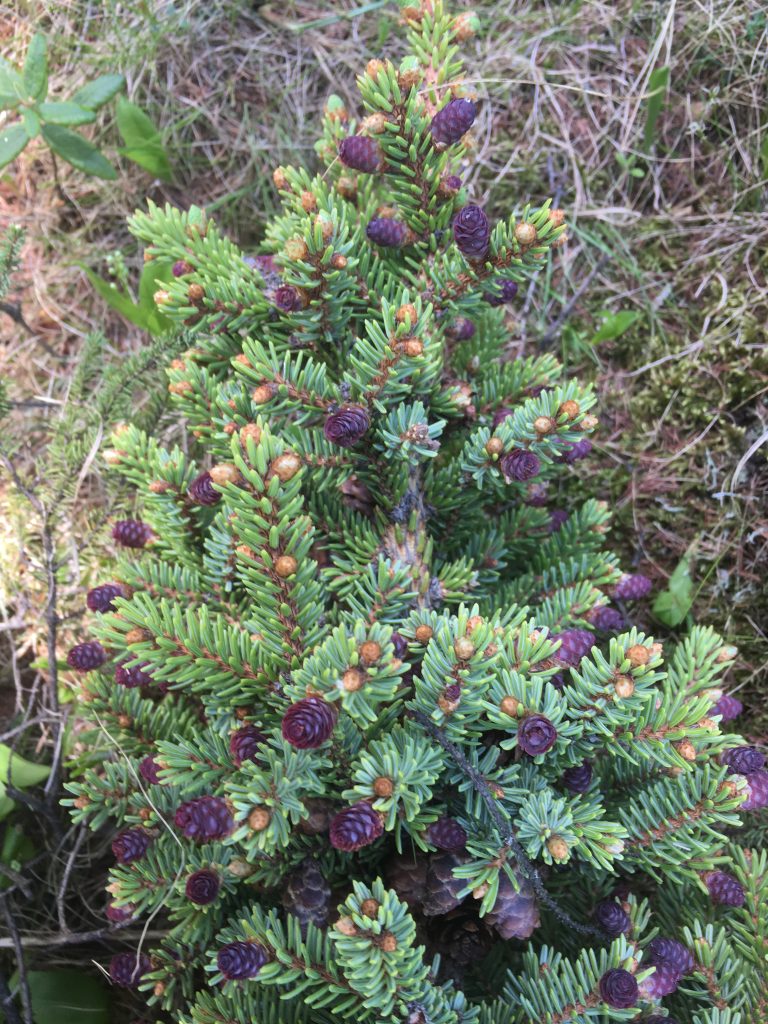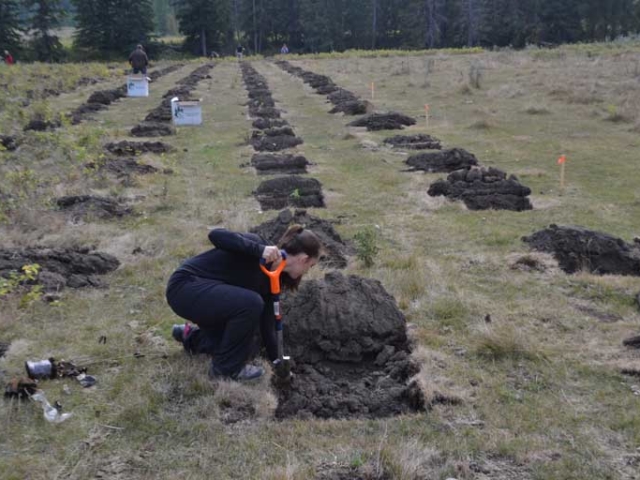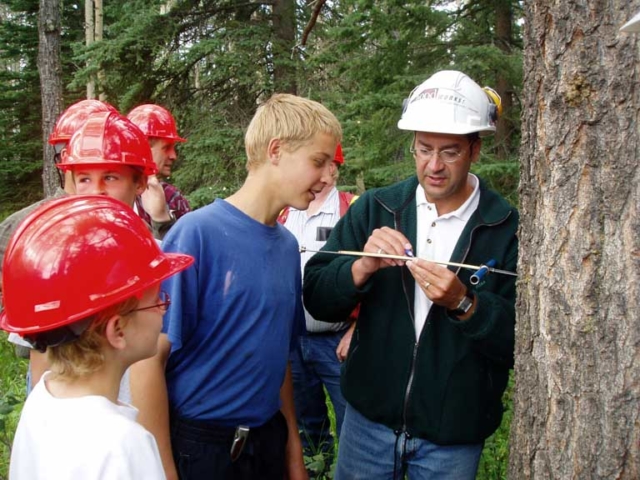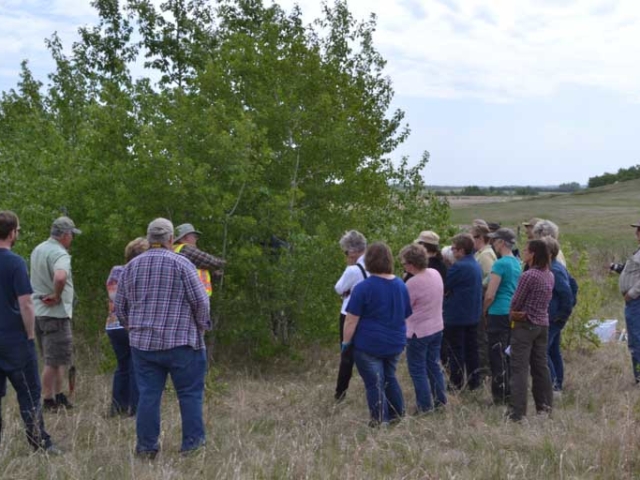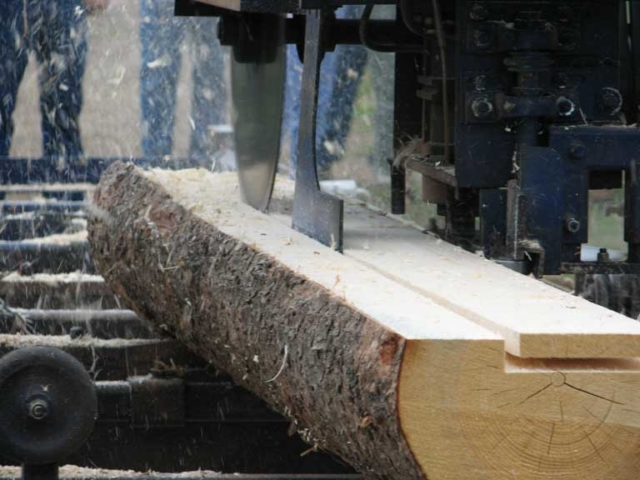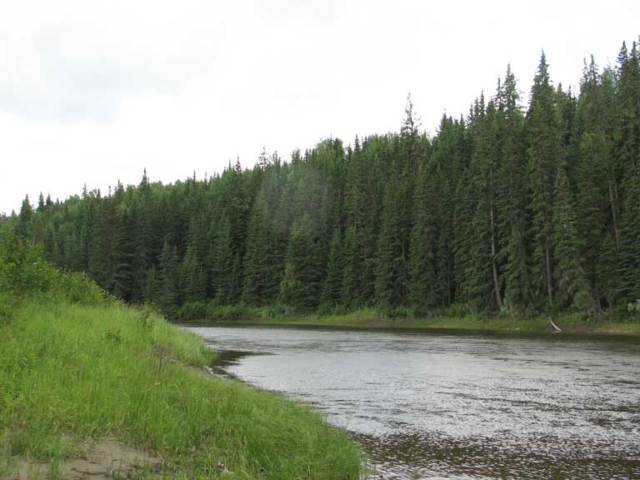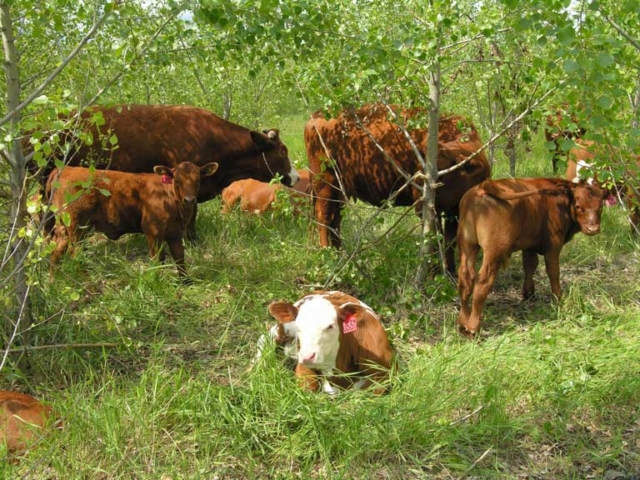Description / Details
Black spruce (Picea mariana)
Black spruce is a long-lived tree most commonly found in poorly drained muskeg areas in the boreal forest and foothills. In these areas, it can tolerate greater amounts of soil saturation than any coniferous species, with the exception of tamarack. However, it will grow more quickly and to a greater size in moist mineral soils with better drainage. It will also grow fastest in the sun, but can survive in significant shade. It prefers sheltered sites, and will not tolerate drought.
In addition to increasing the longevity of a forest stand, black spruce can improve its structural diversity, offering nesting, feeding, and winter cover habitat for insects, birds, and deer. Its cones are well used by squirrels and birds, and its light green branch tips can be harvested in the springtime and pickled or made into teas. The wood of black spruce is highly valued for pulp, particularly when smaller trees are harvested. Larger trees can be turned into dimensional lumber, or used for musical instruments or sounding boards due to its unique resonance qualities.
Black spruce can be planted in Eco-Buffers or riparian buffers in moist to wet sites within the boreal forest or foothills. If non-coniferous forest cover already exists at such sites, black spruce can be planted in its understory, often with minimal site preparation.

